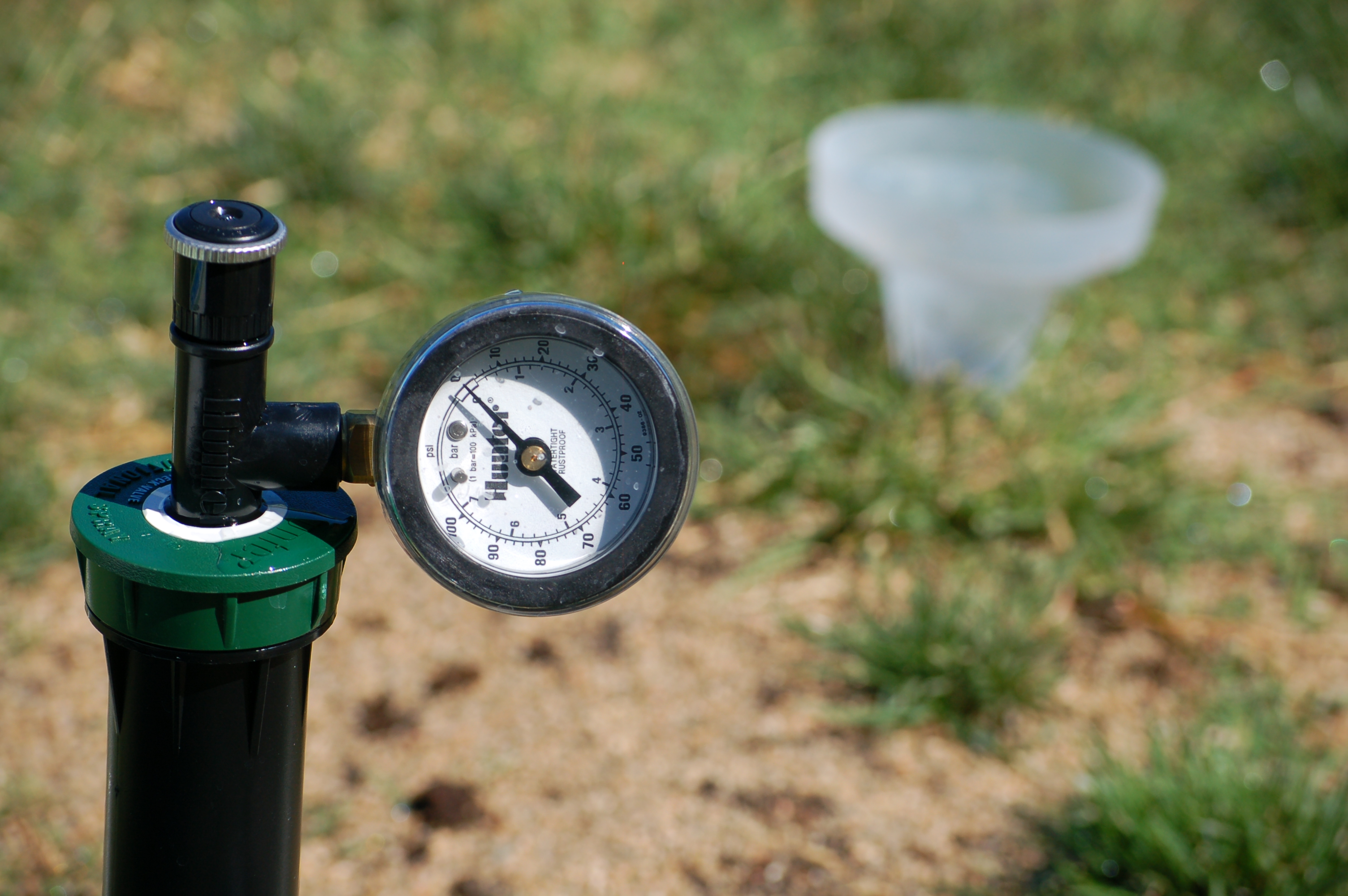A strategically placed pressure gauge can be used to help you isolate problem areas in your irrigation system if you know what normal losses should be. In a typical residential system, the losses are as follows:
- 5 PSI loss through the meter
- 4 PSI loss through the backflow device (DCA or PVB)
- 3 PSI loss through the zone valve
- 2 PSI loss through the mainline
- 1 PSI loss in the lateral line
The first thing you do is place the pressure gauge on the No. 1 test cock of the backflow device, and open it to obtain a static pressure reading. Next, turn on the zone that has the pressure problems and observe the amount of pressure loss through the gauge. If everything was installed correctly, you should see a loss of about 5 PSI. If you lose 20 PSI at this point you know there is a major restriction upstream from the backflow device, or there is too much water flowing due to poor design or a broken line. Either way, you now know that you shouldn’t be digging up zone valves for this problem.
If the pressure reading was acceptable at the No. 1 test cock, then move to the last test cock on the backflow and test again to see if you lose about 4 PSI more. If that checks out, check the pressure at the first sprinkler head using a pitot tube for a rotary head or a pressure tee for a spray. You will see an additional loss of about 5 PSI here (2 PSI through the main plus 3 PSI through the valve).
The last pressure test is at the last head. You should expect to see another 1 PSI loss here (and it is OK to lose as much as 10 percent of the head’s recommended pressure through the lateral line).
The 5-4-3-2-1 losses are “rule of thumb” losses that can be used quickly and effectively to isolate pressure problems. Try it, and see what you think.




